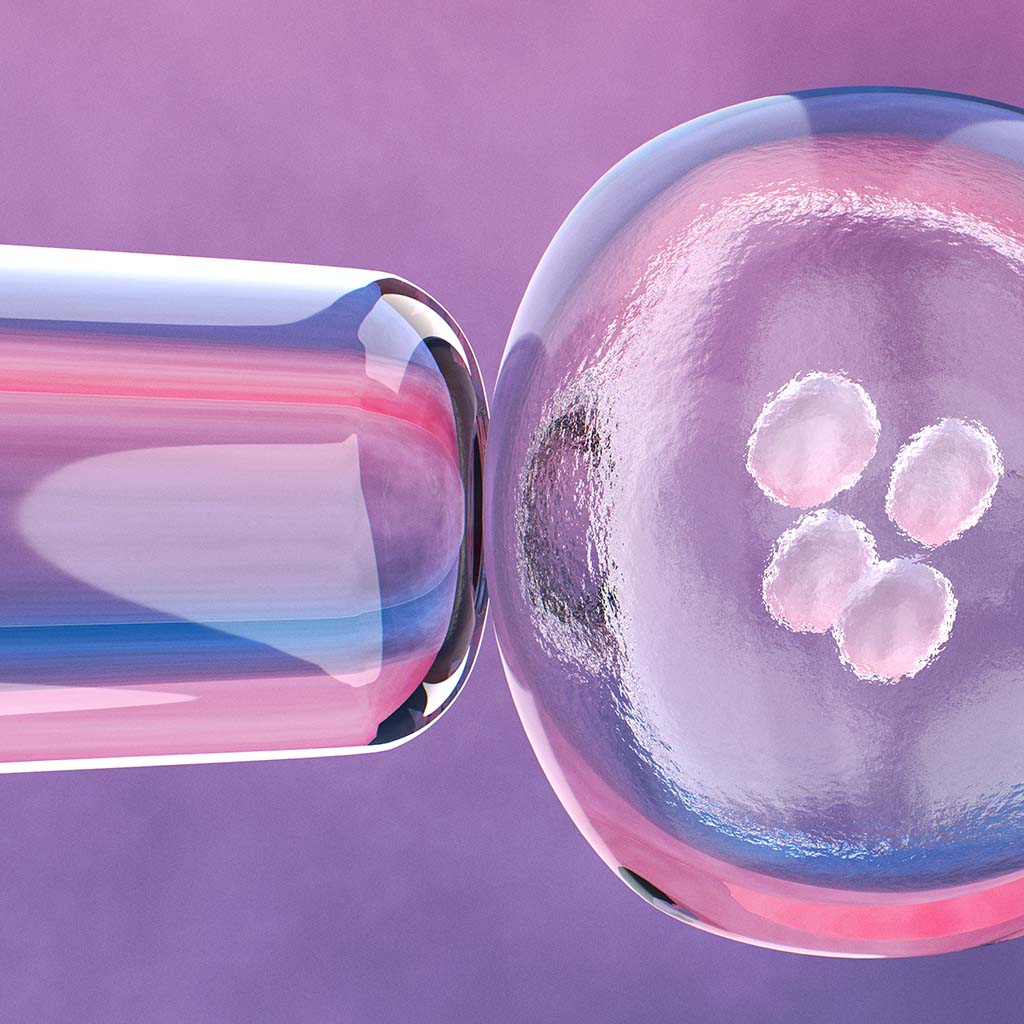Embryo transfer: the right time for implantation

Data publicării: 02-05-2023
Actualizare la: 14-07-2023
Subiect: Ginecologie
Durată de citire estimată: 1 min.
Autor articol
Elena BuonannoRedactor medical
Nicoletta Maxia
Editor și traducător
Viktoryia LuhakovaThe moment of embryo transfer into the mother's uterus is one of the crucial aspects in the path of Medically Assisted Procreation (MAP). Choosing the right time, in fact, can make all the difference, along with the quality of the embryo itself, significantly increasing the likelihood of success and thus of becoming parents. But how do you know when the time is right? We discuss this with Dr. Nicoletta Maxia, biologist in charge of the Center for Medically Assisted Procreation at Policlinico San Marco.
Embryo formation in the MAP pathway
"In MAP procedures, so-called endometrial receptivity, that is, the ability of the uterus to adequately accommodate the embryo, is a fundamental and determining aspect," Dr. Maxia confirms. Before delving into this topic, however, let us take a step back to explain what an embryo is.
"The embryo is the fruit of the fertilization of an oocyte, the female reproductive cell, by a spermatozoon, the male reproductive cell. Of course, this fertilization occurs within the mother's uterus, following sexual intercourse. In the case of Medically Assisted Procreation, on the other hand, to which the couple can resort in case of infertility problems (male or female) and difficulties in conception, embryo formation can take place:
- inside the female genital system, with the first-level techniques (e.g., intrauterine insemination, called IUI);
- in vitro and thus outside the woman's body, with the second-level techniques (such as IVF, ICSI, etc.). In this case, once the oocyte is fertilized and the embryo is formed, the next step is to transfer it into the woman's uterus," the biologist continues. And this is where the choice of the so-called 'implantation window,' or the best time for each individual woman to transfer the embryo, comes into play.
The study of endometrial receptivity: pinopods
"Studying and customizing the implantation timing or window is crucial especially in patients with repeated failures, but it also proves very useful in all other cases to enhance the chances of success and thus avoid the woman and the couple undergoing repeated procedures," the expert emphasizes.
Customization of the implantation window is based on the study of pinopods, which are particular cellular 'formations' that line the outermost surface of the endometrium (the innermost layer of the uterus that covers the uterine cavity). Indeed, pinopod development characterizes the different phases of the ovarian cycle:
- follicular or proliferative phase, which begins with the first day of the menstrual cycle and ends with ovulation;
- ovulation;
- luteal phase, which occurs between ovulation and the beginning of the next menstrual period.
"In the early phase of the cycle, the endometrium appears with an explosion of numerous more or less developed microvilli, which create 'inflorescences.' As the ovulatory moment is reached, these microvilli retract, causing round structures (the initial pinopods) to emerge. Once ovulation is complete, the pinopods increase more in number and develop further until they reach a 'plateau' (stabilization) that precisely defines the best window for implantation of the embryo into the maternal uterus.
From this point on, in fact, the pinopods begin a weak involution until they go into apoptosis (death). This results in the rupture of endometrial cells and subsequently the onset of menstruation if pregnancy has not established," the biologist explains.
The study of pinopods, and, in detail, of their degree of development (eversion) and quantity, therefore, proves to be a valuable biological method for assessing uterine receptivity. From the analysis of pinopods, the scientific literature suggests, in particular, that there is a correlation between:
- numerosity of pinopods, maximum eversion, and increased pregnancies achieved;
- failures and inability of the endometrium to produce pinopods.
Assuming maximum pinopod expression, the best day of endometrial receptivity can then be identified.
Tests to determine the correct implantation window
Analysis of the quantity and development of pinopods occurs after a mild pipelle or endometrial scratch, a technique by which a small sample of the endometrium is taken by means of a thin cannula called a pipelle.
"On the day of oocyte retrieval, a few minutes before the patient wakes up from anesthesia, the gynecologist performs a small endometrial scratch through an appropriate catheter. This light biopsy is delivered to the laboratory by the biologist who studies the endometrial morphology based on the amount and eversion of pinopods. Depending on the receptivity status, a decision is made to keep the embryos in culture 2 or 3 or 4 or 5 days before they are transferred.
Another test used that can help identify the implantation window is genetic testing," Dr. Maxia concludes.